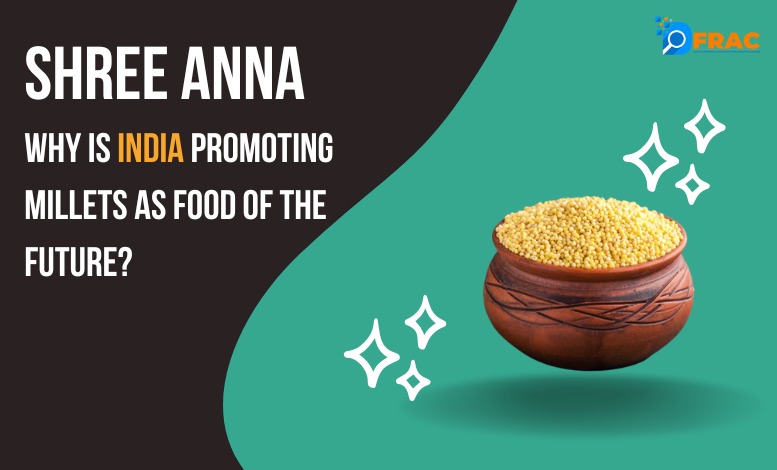Millets have got the name ‘Shri Anna’ in 2023-24 Union Budget. The Finance Minister Nirmala Sitharaman announced to promote millets across the world. Earlier, Prime Minister Narendra Modi has also mentioned millets in his ‘Mann Ki Baat’ programme. The central government is continuously promoting millets.
After all, what are these millets? Why are they being promoted? How much of it is produced in India? Where do we stand in the production of millets in the world? How beneficial are they for our health? Which countries are the largest exporters of millets?
What are millets?
Millet grains, which have been the food of the Indian people in the olden times, are known as ‘super food’. Millets are highly nutritious, acid-free, gluten-free and have dietary properties. In addition, consumption of millets is very helpful in ending malnutrition in children and adolescents as it boosts immunity and health.
Eight crops are included under millets. In this Jowar, Bajra, Ragi, Sawan, Kangni, Cheena, Kodo, Kutki and Kuttu are called millet grain crops. These crops are generally grown on marginal and unirrigated land, so their yield encourages sustainable farming and crop diversification. Due to the encouragement of the government and increasing awareness of people towards health, their purchase has increased. The number of farmers benefiting from the increase in procurement has also increased.
Why are millets being promoted?
Millets have been traditionally produced in India. However, with the advent of modernization and mechanized agricultural equipment and high yielding seeds in the agricultural sector, the trend of people towards the production of rice and wheat increased. As a result, both consumption and cultivation of millets became limited. Time took another turn and due to the changed climatic conditions, people again started producing these grains. Millet grain crops require less water and agricultural inputs (inputs) than other similar crops. In our country, millets are mainly grown in the poor agro-climatic regions, especially in the rainfed regions of the country.
These crops are grown in areas with high temperatures and are called dry land crops as they can be grown in areas with 50-100 cm of rainfall. These crops are less sensitive to soil deficiencies and can be grown in less alluvial or loamy soils. They also require a minimum of water, fertilizers and pesticides. The cultivation of millets helps in reducing the carbon footprint which is a global problem.
Apart from this, millets contribute in a big way to the food and nutritional security of the country. These are known as nutri-cereals as they provide most of the nutrients required for the normal functioning of the human body. Millets have a low glycemic index (GI) and are also helpful in the prevention of diabetes. They are a good source of minerals like iron, zinc and calcium. Millets are helpful in reducing weight and high blood pressure. These are usually consumed with legumes, which are protein-rich.
How much millet grain does India grow?
India is one of the leading producers of millets in the world and accounts for an estimated 41 per cent of global production. According to FAO, the world production of coarse cereals in the year 2020 was 30.464 million metric tonnes (MMT). India alone produced 12.49 MMT of millets. That is, 41 percent of the total millets production is grown in India alone. India recorded a 27 per cent increase in millets production in 2021-22 as against 15.92 MMT in the previous year.
The top five millet producing states in India are Rajasthan, Maharashtra, Karnataka, Gujarat and Madhya Pradesh. The share of millet exports is one per cent of the total production. It is estimated that the millet market will grow from the current $9 billion market value to $12 billion by 2025.
Major countries to which India exports coarse grains are United Arab Emirates, Nepal, Saudi Arabia, Libya, Oman, Egypt, Tunisia, Yemen, UK and USA. Millets exported by India include Bajra, Ragi, Kaneri, Jowar and Buckwheat. Major countries importing coarse cereals are Indonesia, Belgium, Japan, Germany, Mexico, Italy, USA, UK, Brazil and Netherlands.
Which other countries have more production of millets?
Talking about the production of millets in the global scenario, India is at the forefront here. In 2020, global production was 30.5 million tonnes. It is cultivated in more than 32 million hectares of land worldwide. India, Niger and China are the world’s largest producers, accounting for more than 55.0% of global production. After this comes the number of Nigeria, Mali and Ethiopia. In recent years, there has been a sudden increase in the production of millets in Africa due to climate change.
Which countries are the largest exporters of millets?
Global exports of millets are expected to increase from US$ 380 million in 2019 to US$ 402.7 million in 2020. Its major exporting countries are America, Russia, Ukraine, India, China, Netherlands, France, Poland and Argentina. The total exports of these countries stood at USD 221.68 million in 2020. The global export of millets in 2020 was $466.284 million.
How beneficial can millets be for health?
In older generations, coarse grains were an integral part of nutrition. However, the use of these nutrient-rich grains declined. According to the study of Nutrition Journal, if children up to three years of age in India consume 100 grams of millet flour, then they can meet their daily requirement of iron. Children who are two years old should consume less quantity.
Millet flour is an accessible means of meeting anemia, especially for Indian women. Not only in India but all over the world women and children are deficient in iron and minerals.
What is the future plan for millets?
This year also several programmes have been decided to encourage millets. Embassies of India in more than 140 countries will celebrate the International Year of Millets during 2023 by organizing side events on IYM including exhibitions, seminars, talks, panel discussions as well as participation of local chambers, food bloggers, food importers and local Will attend restaurant etc.
Apart from this, millet is also an integral part of the G-20 meetings. Under this, the delegates will be given hands-on experience of millet through tasting, meeting farmers and interactive sessions with start-ups and FPOs.





